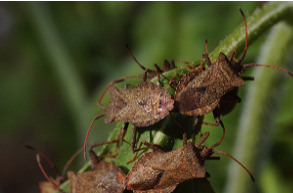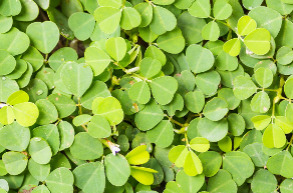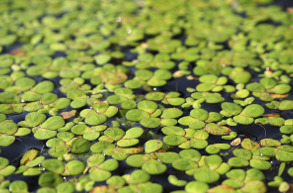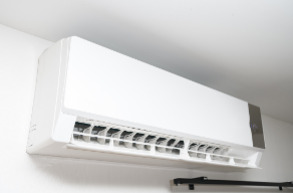Carpetweed Control
Most Effective Products
Carpetweed Control: How to Get Rid of Carpetweed
Carpetweed, also called devils grip and Indian chickweed, is native to Africa and tropical America but is found in most of the United States and is especially common in the East. A broadleaf summer annual, carpetweed grows in disturbed sandy soil of moderate to excellent fertility and is a common problem in garden beds and newly seeded lawns as well as waste areas along roadsides and railroad tracks.
Since carpetweed is an annual weed, all reproduction is through seeds. Carpetweed can be a pretty big issue in ornamental plant beds and in newly established or thinning turf. There are other low growing weeds that can be found in these locations, but there are easy ways to tell them apart. Chickweeds and speedwells are low growers, but lack the whorled leaves and forked branching of stems.
If you are having a problem with carpetweed, we can help. Our DIY carpetweed control guide was developed by our team of lawn care experts to show you exactly what you need to kill carpetweed and remove it from your yard quickly and affordably.
Identification

Carpetweed can be distinguished by their seedlings, which appear as dime-sized rosettes as soon as the soil has warmed in spring but quickly grow into a circular mat forming an extensive carpet over the soil within weeks, which explains their name. The prostrate stems are slender, green, and multibranched with whorls of 3-8 smooth light green leaves at each node.
Carpetweed leaves are egg-shaped to elliptical, and range between .4 to 1.2" in length, and taper to a tiny petiole. Clusters of two to five small white flowers are produced on slender stalks at the leaf axis in mid to late summer. Small three-parted egg-shaped fruits contain orange-red seeds. The root system is a fibrous taproot.
Use the above description and image to help you in properly identifying carpetweed. If you are having trouble, you can always contact us and our lawn care experts will help to correctly ID your weed growth and suggest treatment options.
Inspection

Where to Inspect
Carpetweed thrives on turf that is thinning or is newer and grows best in soils that are moist and rich but they can also be established on drier soils.
What to Look For
Carpetweed is a summer annual weed which grows low to the ground forming a sort of matted carpet like appearance, hence their name. Carpetweed seeds germinate later than most other summer weeds and as a result they can fall under the radar when treating your lawn, depending upon the timing of the treatment.
Treatment
Before using any herbicide product, make sure you first have on the proper PPE for safety (gloves, glasses, mask). Your best bet when dealing with carpetweed is making sure they don't germinate to begin with by laying out a pre-emergent herbicide such as Isoxaben 75WG. Apply 0.5 oz. or 14 grams of Isoxaben 75WG per 1,000 sq. ft. This will wipe out the carpetweed before they pop up out of the ground.
If carpetweed has already emerged on your lawn they can possibly be hand-pulled out if it there isn't many or if they are young, but if there is a large invasion, some post-emergent products can help to eliminate these invaders. We recommend Glyphosate 4 Plus Weed Killer. This professional quality herbicide will deal damage to the leaves on the plant and hinder the development of the root system. The best time to apply this herbicides is early on in the summer when the plant is young and actively growing as this is the time when they are most vulnerable to herbicides.
Step 1- Mix Herbicide and Apply To Treatment Area

Be sure to read and follow label directions so you get the proper application and mixing rates. Use a sprayer on a fan nozzle setting for even coating of the herbicide on the carpetweed. Spray just before the point of runoff.
We recommend using a pre-emergent of Isoxaben 75WG when carpetweed has not yet germinated. For emerged carpetweed, use Glyphosate 4 Plus Weed Killer at 24 fl. oz. of product per acre when carpetweed reaches a height of 6" and a length of 12". For general applications, Glyphosate Plus can be applied at a rate between 0.7 oz. (0.5% solution) to 13 oz. (10% solution) in a gallon of water depending on the spray solution ratio you use. Use the 0.5% solution for weeds less than 6 inches in height. For weeds over 6 inches tall, use a 1% solution.
Be cautious, as Glyphosate 4 Plus Weed Killer is a non-selective herbicide that will eliminate any plant it comes into contact with.
Step 2 - Follow Up Application
Because carpetweed is a stubborn and persistent weed, you may need to do repeated applications. Check back weekly and spot treat as necessary until the plant has completely died.
Prevention

The best defense against Carpetweed is a thick lush lawn that is properly maintained and well-fed. A thick dense lawn that is well-fertilized will be better able to choke out broadleaf plantain weeds and not allow them room to establish.
- Mowing at a higher height to discourage growth
- Watering your grass deeply yet infrequently
- Fertilize your lawn so it doesn't have a deficiency.
- Choose a turfgrass that can prevent weeds.
Key Takeaways
- Carpetweed is a frustrating lawn weed that, as its name indicates, spreads very quickly on the ground to form a carpet-like matting and is found all over North America.
- We recommend a treatment of Glyphosate or Quinclorac to get rid of carpetweed or apply pre-emergent like Isoxaben to keep carpetweed from sprouting in the first place.
- To prevent carpetweed, implement proper cultural practices such as watering, mowing and feeding to make your yard less conducive to canada thistle making a return and invading your yard.


























































































































































































































































































































































































































































































































